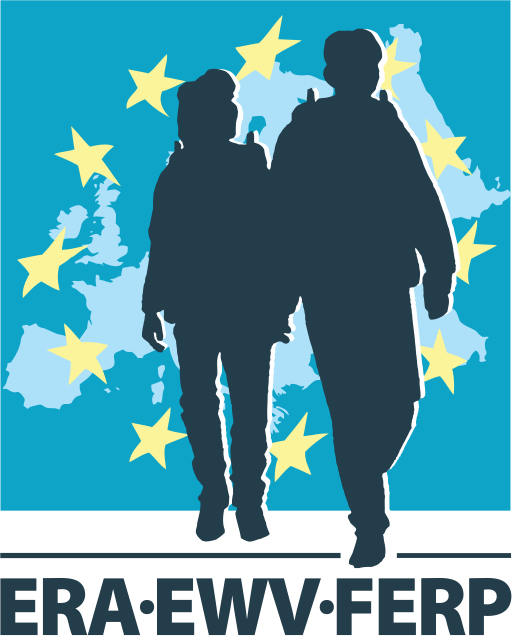Route
E4 – Austria – Alps (“Nordalpenweg”)
E4 – Austria – Prealps (“Voralpenweg”)
E4 – Germany – Prealps (“Maximilianweg”)
Route description
Starting Point in Austria
Geschriebenstein, 884 m, on the border between Austria and Hungary.
End Point in Austria
Bregenz, Bodensee, 427 m, near the border to Switzerland
Route of E4 in Austria
Alpine route
Wien – Wienerwald – Schneeberg – Rax – Schneealpe – Veitschalpe – Hochschwab – Gesäuse – Totes Gebirge – Dachstein – Tennengebirge – Hochkönig – Loferer Steinberge – Kaisergebirge – Rofangebirge – Karwendel – Lechtaler Alpen – Bregenzerwald – Bregenz
Pre-alpine Route
Wienerwald (northern and southern route) – Traisental – Pielachtal – Erlauftal – Waidhofen/Ybbs – Ennstal – Steyrtal – Traunsee – Höllengebirge – Attersee – Schafberg – Wolfgangsee – Fuschlsee – Salzburg. From there, a marked long-distance trail called “Maximiliansweg” crosses the Bavarian Alpine Foreland and continues to Bregenz.
Please note that there are several marked variants to the route described above – more details in the literature mentioned below.
Length
1100 km (Alps), 900 km (Prealps)
Ground path of E-Path
This is one of many possibilities:
- Österreichischer Weitwanderweg 07 („Ostösterreichischer Grenzweg“): Geschriebenstein – Landsee, 35 km
- Österreichischer Weitwanderweg 02 („Zentralalpenweg“), Landsee – Semmering, 65 km
- Österreichischer Weitwanderweg 01 („Nordalpenweg“): Wien – Bregenz, 1100 km
- Österreichischer Weitwanderweg 04 („Voralpenweg“): Wien – Salzburg, 500 km
- Maximiliansweg (Germany), Salzburg – Bregenz, 400 km
Alternatively, one can follow WWW07 to Vienna to continue on WWW01 or WWW04.
Responsible organizations
Deutscher Alpenverein (DAV)
Mail: info@alpenverein.de
Web: www.alpenverein.de
OeAV-Sektion Weitwanderer
Mail: weitwanderer@sektion.alpenverein.at
Web: www.alpenverein.at/weitwanderer
Österreichischer Touristenklub (ÖTK)
Mail: zentrale@oetk.at
Web: www.oetk.at
Naturfreunde Österreich, Touristenverein „Die Naturfreunde“ (TVN)
Mail: info@naturfreunde.at
Web: www.naturfreunde.at
Municipal Offices and various local organizations
Publications
ÖAV Sektion Weitwanderer: Nordalpenweg – Führer zum Österreichischen Weitwanderweg 01. Order online via www.freytagberndt.com
Radinger, Wurst: Nordalpenweg, Kral Verlag 2016
ÖAV Sektion Weitwanderer: Zentralalpenweg – Führer zum Österreichischen Weitwanderweg 02. Order online via www.freytagberndt.com
ÖAV Sektion Weitwanderer: Voralpenweg – Führer zum Österreichischen Weitwanderweg 04. Order online via www.freytagberndt.com
ÖAV Sektion Weitwanderer: Grenzlandweg – Führer zum Österreichischen Weitwanderweg 07. Order online via www.freytagberndt.com
Maps
These map publishers each cover the whole area
Marking System
Weitwanderweg 01, 02, 04, 07:
Austrian flag along the way, at crossings yellow route indicator signs with name and path number. All path numbers along long distance paths end with “their” number. They usually have a third (regional) digit, e.g. 601 or 302.
Crossing with another E-Path
Practical
Accommodation
Inns, guesthouses and pensions can be found at least every 20 – 30 km outside the Alps and every half a day in the alpine region. All publications listed above are pretty accurate when it comes to names and contact detail of possible places to stay. In the alpine region, several alpine associations maintain mountain huts where you can eat and sleep during summer. Several mountain huts offer self-supporting accommodation as well, some of them are basic shelters, others are quite comfortable. You can check out the equipment as well as capacity and other important information at: https://www.alpenverein.at/portal/berg-aktiv/huetten/index.php
You might consider a membership with Austria’s Alpine Association, as there are significant discounts on accommodation and it includes an insurance package (emergency transport, helicopter transport, etc. …). More information: www.alpenverein.at. Active memberships in any other east-alpine alpine association (Germany, Austria, Switzerland, South Tyrol) are usually accepted as well.
Gear
In the eastern quarter, you do not enter alpine territory above tree line. Weatherproof hiking equipment will do the trick. You don’t need alpine equipment along the “Voralpenweg” either, but you will reach medium alpine territory (mainly below forest line). Along the Nordalpenweg, you reach Austria’s alpine region near the border between Lower Austria and Styria (Schneeberg/Rax/Semmering). From there on, you will mostly rely on Mountain huts, which generally open around May/June and close at the end of summer, respectively. You can check their season window at the link given above.
Food
In several decentral villages you won’t find a grocery shop anymore, so you rely on your host from time to time. It is usually no problem to buy sandwiches from the breakfast buffet. Usually you have a chance to get warm food once a day.
Travel
Between Wien, Salzburg and Bregenz there’s a direct train connection in close intervals. Between the major cities though you will mostly rely on busses. Usually you have a good chance to catch a bus in the morning and around lunchtime (school busses). Unfortunately, public transportation tends to decrease. Hitchhiking is legal everywhere except on motorways.
——————-
Author
Martin Marktl, Austrian Alpine Association (ÖAV)

